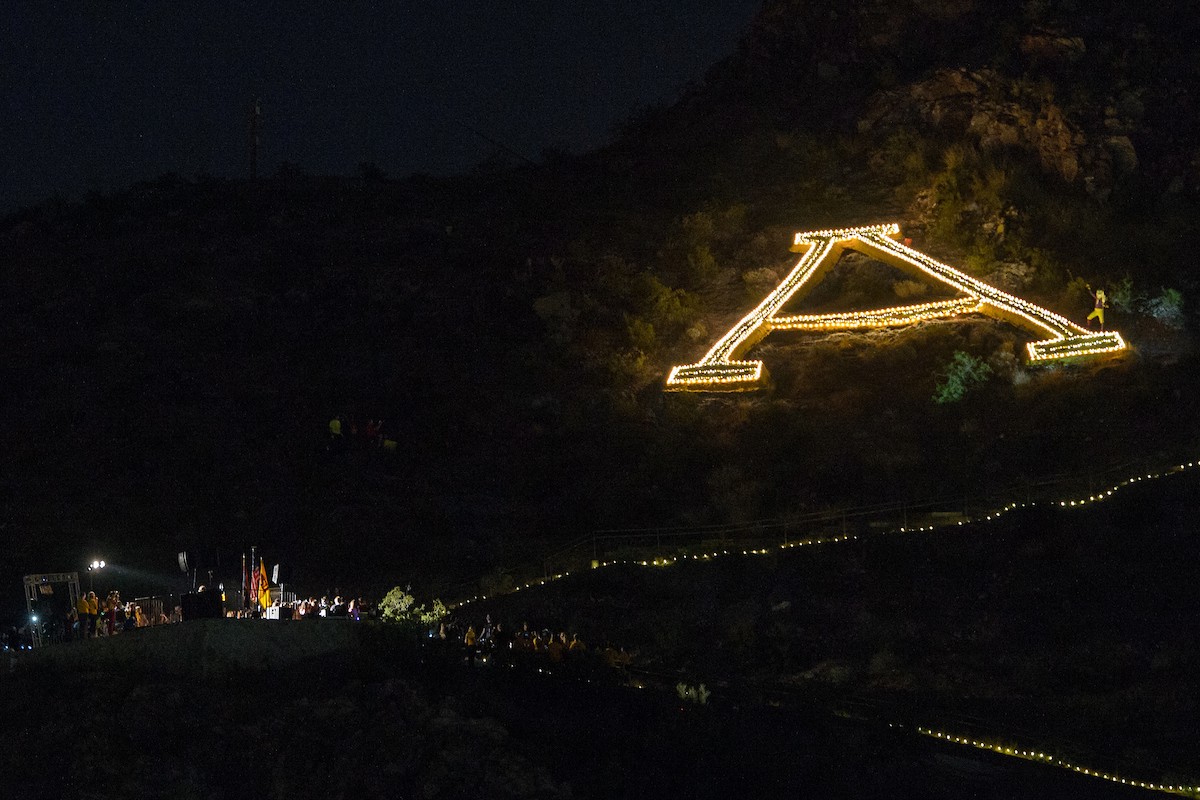History of ‘A’ Mountain
ASU students were not the first to lay claim to the iconic symbol of ASU fame located on the southeast corner of Mill Avenue and Rio Salado Parkway. Here is a timeline of the history of "A" Mountain, a culturally significant peak that contains more than 500 petroglyphs and is home to abundant desert fauna and flora.
750-1450: Hohokam lived in a small village on the butte, created a series of terraces and foundations as well as petroglyphs that you can see today. Around the area they built hundreds of miles of irrigation canals, cultivated corn as their main crop and created La Plaza, a large settlement at the base of the butte. Today, the Salt River Pima Maricopa Indian Community considers the Hayden Butte Preserve to be a sacred place and a link to its ancestors.
1860s: Charles Trumbull Hayden, traditionally credited with being the founder of Tempe, visited the site, which was named Hayden Butte in his honor. He ran freight wagons along the Santa Fe Trail from Missouri to New Mexico. He later laid claim to 160 acres in Tempe, opened a ferry on the river and a flour mill at the base of the butte.
1917: The class of 1918 of the Tempe Normal School began the annual Lantern Walk tradition, which at the time featured a torch that was passed between first and second year students.
1918: The first letter, an “N” for Tempe Normal School, was installed on the mountain.
1925: The school changed its name to the Tempe State Teachers College, and the “N” on the mountain became a “T.”
1938: Just three years later, the school changed its name again, this time to Arizona State Teachers College, and the “T” became an “A”, which was laid with loose rocks and covered with white paint. Painting the “A” white has been a tradition since then. Every fall, incoming students paint the “A” white to signify the start of a new year.
1952: Vandals destroyed the “A” with dynamite.
1955: A new “A” was built from reinforced steel and concrete. The 60-foot “A” remains today.
1958: A measure placed on the ballot by citizen initiative recognizes the longstanding efforts to advance the fast-growing college. The measure — Prop 200 — is passed by the state’s voters by a 2-to-1 margin and results in the college’s new moniker: Arizona State University.
1973: The City of Tempe declared Hayden Butte a park. Locals have fought many times to keep the Butte intact and free from buildings. The Butte is a landmark that is as important to Tempe’s history as it is to ASU’s.
2002: Tempe designates the landmark a preserve, changing its name to Hayden Butte Preserve.
Today, “A” Mountain remains a point of pride for ASU students, alumni and friends.

